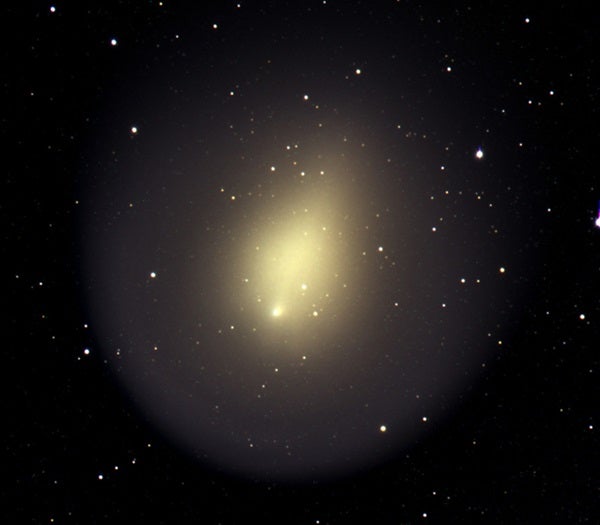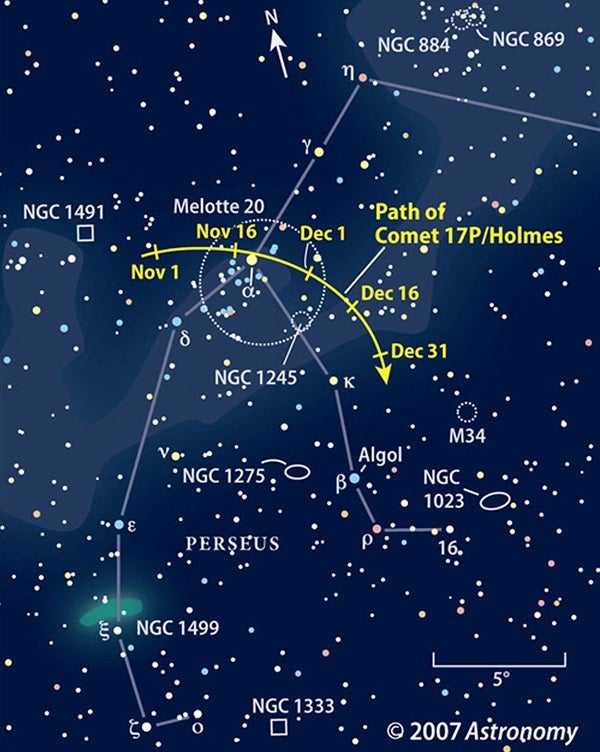Comet 17P/Holmes remains a striking target for binoculars, small telescopes, and even the unaided eye. Take the time to see this unusual visitor, which leapt from obscurity to celebrity October 23.
For reasons astronomers don’t entirely understand, the cosmic iceball flared in brightness by a million times in just 2.5 days. This outburst propelled the comet from a faint-fuzzy best viewed in a large amateur telescope to a star-like object observers throughout the Northern Hemisphere could easily see in a moonlit sky.
The comet subsequently expanded into a fuzzy patch and now rivals the Moon in size. Holmes has faded relatively little in terms of astronomers’ brightness scale, where it now hovers near magnitude 3, but its light is spread out over a larger area.
Comet Holmes currently lies 151 million miles (244 million km) from Earth and 234 million miles (377 million km) from the Sun. In early May, the comet reached its closest point to the Sun in its 6.88-year orbit. At that time, Holmes was about twice as far from the Sun as Earth. Since then, the comet has been increasing its solar distance. Earth, traveling on an inside lane of the solar system, passed Holmes November 5.
The comet lies about 50° high — halfway from the horizon to straight overhead — at 8 p.m. local time. It then appears about twice as high as the bright star Capella. For observers at mid-northern latitudes, the comet climbs directly overhead around local midnight.
Interference from the waxing crescent Moon will worsen throughout the next week. The First Quarter Moon, which sets around local midnight, occurs Saturday, November 17, and the Moon is Full the following Saturday.
- Naked-eye comet continues to shine, October 30, 2007
- Naked-eye comet bursts into view, October 24, 2007











